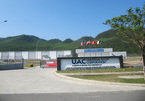In May, Taiwan’s Far Eastern pumped an additional $610 million into a factory from Polytex Far Eastern Vietnam, located in the southern province of Binh Duong. This raised its total investment in Vietnam to $1.37 billion since it started investing in the country in 2015. This factory manufactures textiles, clothing, polyester, and chemical fibers.
Like Far Eastern, many other foreign-invested enterprises are continuing to eye the processing and manufacturing, as well as power and real estate sectors. Meanwhile, foreign investment in sci-tech remains modest, making up just 1-2 per cent of the country’s total foreign direct investment (FDI).
As shown in statistics from the Ministry of Planning and Investment, Vietnam lured nearly $14 billion worth of newly-registered, added FDI and stake acquisitions in the first five months of 2021, up 0.8 per cent on-year. Meanwhile, FDI in sci-tech hit nearly $321 million, or 2 per cent of the country’s total.
In the three national high-tech parks, the FDI picture was still gloomy. According to Saigon High-tech Park (SHTP) in Ho Chi Minh City, it attracted no new projects in May. In the first five months, the total value of newly-registered and newly-added capital was nearly $800 million. The amount included just one new domestic-invested project worth just over $7 million and nine others getting licensed to increase capital, with three being foreign-invested ones worth $784 million.
Le Bich Loan, deputy director of the SHTP Management Board, told VIR, “We saw a fall in investment attraction during the period because of a number of unfavourable conditions, including COVID-19, and a lack of land funds.”
A similar situation was also seen at Hoa Lac High-tech Park (HHTP) in Hanoi, and Danang High-tech Park (DHTP). So far this year DHTP and industrial zones (IZs) in the central city of Danang have lured three foreign-invested projects with the total investment capital of $145 million, including two in DHTP.
In the north, HHTP attracted two new domestically-invested projects totalling $134.8 million between January and May. A HHTP source admitted, “The result is lower than that of the same period last year. This is due to COVID-19 which has prevented investors from visiting the site to seek opportunities.”
HHTP was on a roll in 2018, when it attracted 11 projects registered at $739 million, a record high over the past 20 years and involving notable names like Nidec, Mitsubishi Chemical, and Hanwha Group. The park has welcomed few such giants since then.
Both DHTP and HHTP boast special incentives for investment attraction. One advantage for DHTP is the government’s issuance of Decree No.04/2018/ND-CP in 2018 on incentive policies, in which a new investment project of at least VND3 trillion ($130 million) enjoys a 10 per cent corporate income tax (CIT) within 30 years, along with other boons. However, the incentives are not making much of a dent in the pandemic era.
Meanwhile, HHTP is backed by Decree No.74/2017/ND-CP from 2017, governing special mechanisms and policies for the park. As ruled, a new investment project of at least VND4 trillion ($181 million) in the park shall be subject to the 10 per cent CIT within 30 years.
While the pandemic can be cited as the main reason for the poor performances, results were lower than other sectors even before the pandemic hit, with performances yet to meet the expectations of 2019’s Resolution No.50-NQ/TW on orientations to improve institutions and policies and enhance the quality and effectiveness of foreign investment through to 2030. In particular, it placed focus on application and transfer of high-technology, as well as research and development and innovation.
In 2019, FDI in sci-tech activities was $1.5 billion, compared to nearly $25 billion in the processing and manufacturing sector. Excluding the foreign investment in mergers and acquisitions, the threshold was just $500 million. Similarly, in 2020, FDI in sci-tech activities was $1.34 billion, compared to nearly $14 billion FDI in the processing and manufacturing sector.
Nguyen Mai, chairman of the Vietnam Association of Foreign-Invested Enterprises, blamed the situation for Vietnam’s traditional approach in FDI attraction, which has now become inefficient and inappropriate with the new development period when regional competition intensifies.
Moreover, Industry 4.0 and digital transformation is making great impacts on the national socioeconomic development. “In this new period, to increase the quality of FDI, a new approach should be taken that focuses on the development level of cities and provinces, the change in the incentive policy, and the development of specific norms to assess the influence of FDI on socioeconomic development,” he suggested.
Mai recommended that it is high time for Vietnam to have more concrete criteria on measuring efficiency of such investment, instead of making common assessments. For instance, at an IZ to license a foreign-invested project, the criterion and norms must be set out on how much USD minimum is required per cleared hectare of land, and how much contribution to the state budget is required.
Source: VIR

Hi-tech investors flock to Da Nang
Six investment licences and one investment proposal project at Da Nang Hi-Tech Park and Industrial Zones worth more than US$280 million have been granted to domestic and foreign investors.

More efforts needed to attract FDI into hi-tech farming
The Vietnamese government holds high hope for a green and safe agricultural sector that could be a driving force for growth just like the manufacturing and processing sector.